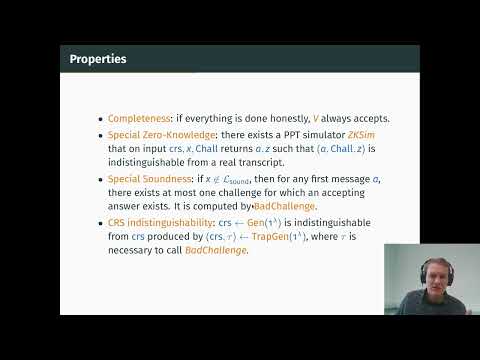CryptoDB
Rational Modular Encoding in the DCR Setting: Non-Interactive Range Proofs and Paillier-Based Naor-Yung in the Standard Model
| Authors: |
|
|---|---|
| Download: | |
| Presentation: | Slides |
| Conference: | PKC 2022 |
| Abstract: | Range proofs allow a sender to convince a verifier that committed integers belong to an interval without revealing anything else. So far, all known non-interactive range proofs in the standard model rely on groups endowed with a bilinear map. Moreover, they either require the group order to be larger than the range of any proven statement or they suffer from a wasteful rate. Recently (Eurocrypt'21), Couteau et al. introduced a new approach to efficiently prove range membership by encoding integers as a modular ratio between small integers. We show that their technique can be transposed in the standard model under the Composite Residuosity (DCR) assumption. Interestingly, with this modification, the size of ranges is not a priori restricted by the common reference string. It also gives a constant ratio between the size of ranges and proofs. Moreover, we show that their technique of encoding messages as bounded rationals provides a secure standard model instantiation of the Naor-Yung CCA2 encryption paradigm under the DCR assumption. Keywords: Range proofs, NIZK, standard model, Naor-Yung. |
Video from PKC 2022
BibTeX
@inproceedings{pkc-2022-31710,
title={Rational Modular Encoding in the DCR Setting: Non-Interactive Range Proofs and Paillier-Based Naor-Yung in the Standard Model},
publisher={Springer-Verlag},
author={Julien Devevey and Benoit Libert and Thomas Peters},
year=2022
}

